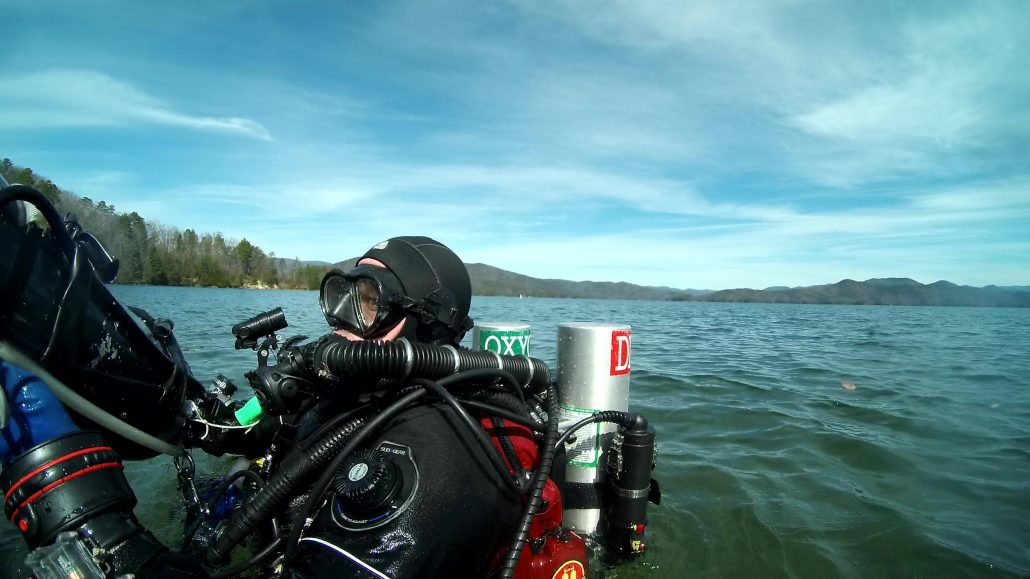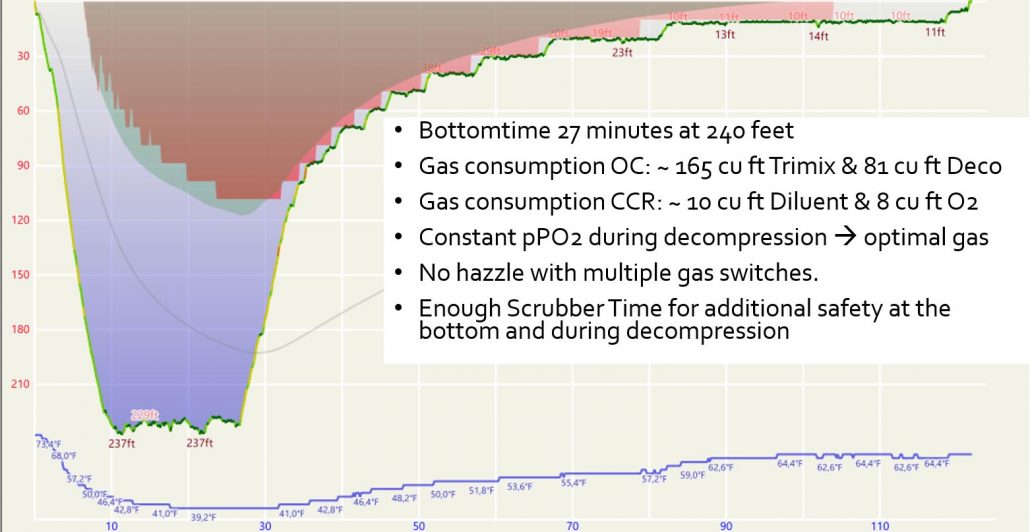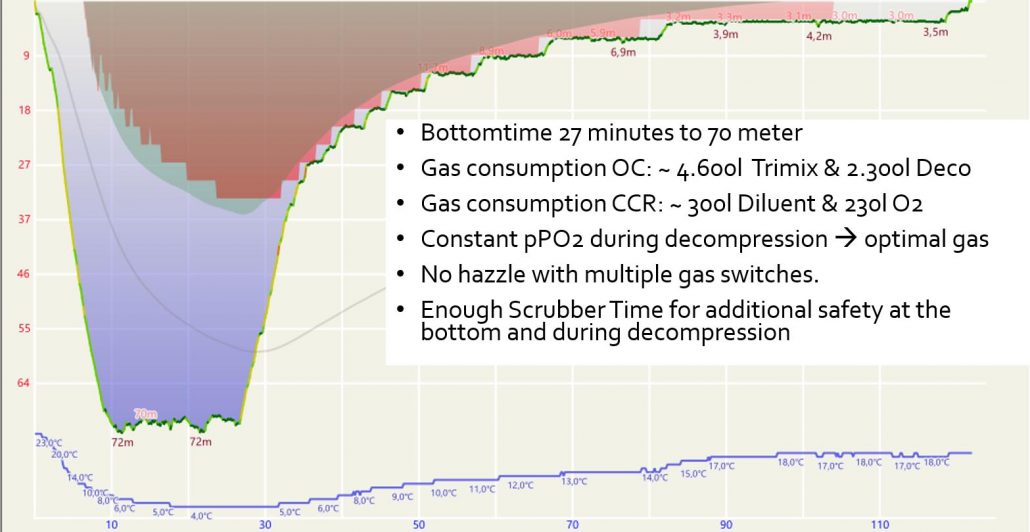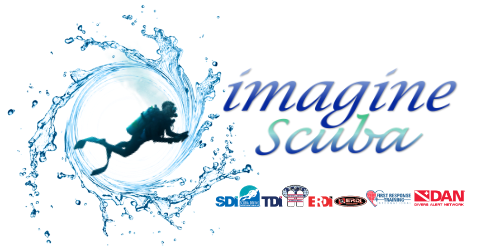Have you ever thought about diving a closed-circuit rebreather (CCR)? While there are many different options on the market to choose from, you may have wondered exactly why you should make the move from your open circuit gear to more advanced technology.

Regardless of the different models, here are the five top advantages of rebreathers and how they can enhance your diving experience:
1. More comfortable to dive
Rebreathers are more complex and challenging than open circuit diving, but they also have some benefits to increase your comfort level.
I started diving in cold water and quickly upgraded to a drysuit to enjoy longer and deeper dives. However, one thing I only noticed once I switched to a rebreather is, how much warmth is actually lost through breathing and how much compressed, dry gas increases your thirst.
When diving open circuit, the inhaled gas is decompressed and cools down (Joule-Thomson effect) and has to be dry in order to not cause any free-flowing regulator due to freezing. Our lungs have to warm up the gas, more or less to our core temperature. A rebreather does not exchange gas with every breath and in addition, the chemical reaction in the scrubber heats up the gas with every cycle and reduces the heat loss of your body in cold water even further. In addition, the gas in the loop stays humid and reduces dehydration.
As a rebreather diver, you need to carry enough bailout tanks to handle an emergency and safely bring you back to the surface. On a usual dive, however, these tanks are with you and ready but do not have to be used. This means you can enjoy even deeper Trimix dives without the hassle of switching back and forth between different tanks during the travel and decompression phase. This means less time spent on handling your equipment, reduced risk of switching to the wrong gas, and more time to focus and enjoy the dive.
2. Extended dive time
A rebreather allows you to mix gas on the fly and adjust the share of oxygen you breathe. Just like Nitrox, this makes it perfect to extend the bottom time in the recreational range. But where Nitrox only has this benefit at the maximum operating depth of the dive, the CCR can adjust and extend the no-stop time for any given depth on a multi-level dive. Even if you dive into mandatory decompression stops, they will be significantly less.
This is just like having different Nitrox-gases for every phase of the dive but without the need to prepare and carry so many tanks with you.
Beyond recreational depths, open circuit and CCR has the same decompression profile, as the number of tanks and different gases goes up inevitably. In that area, the rebreather provides another advantage of longer total dive time, providing a useful safety net in an emergency.
If you have ever seen the needle of your pressure gauge move on open circuit while breathing at 90 m /300 ft, you can imagine how this can raise the stress-level when you face an issue.
On a rebreather, the maximum dive time depends on your scrubber duration, which is usually good for a couple of hours. That means that even on a deep Trimix dive or far into a cave system, time to solve a problem does not drain your gas supply. Only the consumed oxygen will be replaced. Any other tanks stay untouched. This gives you time to breathe, think, and act, and honestly, it is very comforting in such a situation. You may need to add additional decompression time on the way out and up, but additional scrubber time is usually more readily planned for than additional tanks on open circuit.
3. Optimal gas
As mentioned above, a rebreather allows you to set the ideal mix for every depth of the dive. This does not only apply to the bottom portion, but also to the ascent and decompression phase.
While ascending, the partial pressure of oxygen remains constant and reduces the partial pressure of the inert gases, usually Nitrogen and Helium. This allows for a constantly high oxygen content to optimize decompression, to reduce time for mandatory stops, and eliminate spikes of inert gases that could cause Isobaric Counter Diffusion (IBCD). This advantage diminishes only for deeper dives, where an open circuit diver must carry many additional gases in even more tanks.
The gas in a CCR is also ‘ideal’ for your budget. Re-breathing the gas and only adding the consumed oxygen means a fraction of the cost. The following dive profile shows a bottom time of 27 minutes to 70 m / 230 ft. A typical consumption for this dive may be around 300 l / 10 cu ft of diluent gas and 230 l / 8 cu ft of oxygen. That is less than a tenth of Trimix gas in comparison to the same dive on open circuit. With the Helium prices on the rise that can be a true cost saver!


4. Silence and aquatic wildlife
A rebreather enables you to dive in total silence and enjoy the environment without any disturbing sound from exhaled bubbles. The absence of unnatural noises allows you to fully immerse into the aquatic world and better enjoy any wreck, cave, drop-off or reef. How much closer can it get to “The Silent World” as Jacques Cousteau imagined?
Also, fish and other animals will no longer be shied away by the bubbles and tend to come closer and stick around. The majority of fish will only stay close enough if their curiosity is greater than their fear of anything unfamiliar. They don’t need bubbles.

Needless to say, this makes it easier to take pictures and videos. Many professional photographers and videographers choose a rebreather as a tool to get the job done for this very reason.
5. Easier logistics
Gas fills and supply hold much longer. Once your bailout tanks are set, you can keep them until you need them in an emergency and there is no need to fill them between dives, if unused. That means the fills your smaller onboard gas tanks are all you need to take care of, even when diving for a couple of days in a row.
Mixing the right gas is down to one diluent tank and not a twin set or a couple of stages, making it much less time consuming and convenient to have the proper result for your next dive. Also, in locations where it is not possible to refill, all you need for additional dives may be another set of 19 or 30 cu ft bottles. That’s easy to manage in comparison to breaking fresh and fully filled 80 cu ft tanks for every new dive.
Lastly, the limits of your CCR setup define the maximum for your dives but are very flexible to accommodate profiles that are less demanding.
Conditions change and you have to switch to a shallower dive site? Your buddy’s gas supply only lasts for a shorter dive-plan? No problem. As long as you stay within your scrubber duration and bailout, your diluent is set for the maximum operation depth and you can flexibly adjust your plan with the same equipment configuration. On top, you do not even waste precious Helium fills.
Usually, rebreather diving comes into play when open circuit diving reaches its logistical limits. However, it offers much more than just advanced diving. Just like open circuit offers a new level of underwater experience when compared to snorkeling, a CCR is another step towards a fully immersive experience. Enjoy the silence and new limits for exploring the underwater world!
By Markus Ehmann

